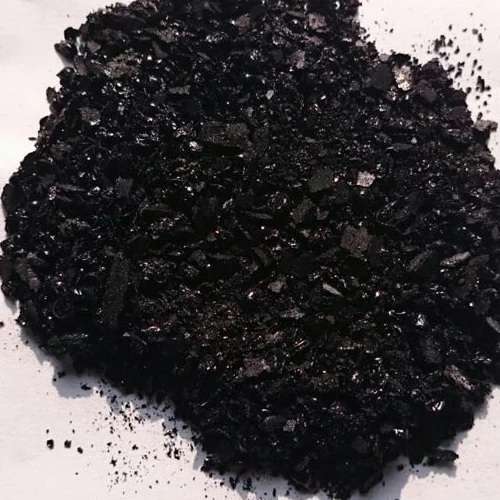Exploring the Ancient Art of Dyeing with Chinese Indigo Plants and Their Cultural Significance
The Art and Craft of Indigo Dyeing A Journey into China’s Indigo Plant Dye
Indigo, derived from the leaves of the indigo plant, has been an integral part of Chinese culture for centuries. The deep blue hue of indigo dye has not only adorned textiles but has also woven itself into the very fabric of Chinese history, art, and trade. This article explores the significance of the indigo plant dye in China, its traditional methods of production, cultural implications, and modern-day relevance.
Historically, the cultivation of indigo in China dates back over 5,000 years. The use of indigo dye was notably prominent during the Tang Dynasty (618-907 AD), when it was highly sought after for its vibrant color and colorfast qualities. This unique dyeing technique was brought to perfection through generations of artisans who mastered the process of extracting pigment from the indigo plant, primarily Indigofera tinctoria.
The Art and Craft of Indigo Dyeing A Journey into China’s Indigo Plant Dye
The dyeing process itself is equally fascinating. Artisans use a resist dyeing technique, where fabric is treated with a substance that repels the dye before being submerged in the indigo vat. This method allows for intricate patterns and designs to emerge on the fabric, showcasing the skill and creativity of the dyers. The deep blue of the indigo, often associated with tranquility and wisdom, provides the perfect backdrop for various artistic expressions, including traditional Chinese motifs.
china indigo plant dye

Beyond its aesthetic appeal, indigo dyeing embodies a deep cultural significance in various regions of China. In places like Hunan, Jiangxi, and Guizhou, indigo dyeing is not just a craft but also a communal activity that fosters social ties among villagers. Festivals and local markets often celebrate the art of indigo dyeing, reflecting its role in community identity and heritage. Furthermore, indigo garments have been worn by generations as symbols of strength, transformation, and connection to nature.
In recent years, interest in natural dyes, including indigo, has surged as people seek sustainable and eco-friendly alternatives to synthetic dyes. Amid growing concern over environmental degradation caused by industrial dyeing processes, many artisans are reviving traditional methods to produce indigo dye. This resurgence not only preserves ancient techniques but also promotes environmentally responsible practices in the textile industry.
Moreover, the global fashion industry is beginning to acknowledge the value of indigo dye. Its unique characteristics and rich history make it a popular choice among designers looking to infuse their work with authenticity and craftsmanship. As more consumers become aware of the provenance of their clothing, the demand for naturally dyed fabrics continues to grow, fostering a renewed interest in the indigo plant and its dye.
In conclusion, the journey of indigo dye in China is a rich tapestry that interweaves history, art, and culture. As traditional practices are cherished and revitalized in the modern context, the indigo plant dye stands as a testament to the enduring legacy of craftsmanship and the deep connection between humans and nature. Whether through the vibrant textiles of ancient times or the contemporary fashion landscape, indigo dye remains a symbol of beauty, sustainability, and cultural heritage.
-
The Timeless Art of Denim Indigo Dye
NewsJul.01,2025
-
The Rise of Sulfur Dyed Denim
NewsJul.01,2025
-
The Rich Revival of the Best Indigo Dye
NewsJul.01,2025
-
The Enduring Strength of Sulphur Black
NewsJul.01,2025
-
The Ancient Art of Chinese Indigo Dye
NewsJul.01,2025
-
Industry Power of Indigo
NewsJul.01,2025
-
Black Sulfur is Leading the Next Wave
NewsJul.01,2025

Sulphur Black
1.Name: sulphur black; Sulfur Black; Sulphur Black 1;
2.Structure formula:
3.Molecule formula: C6H4N2O5
4.CAS No.: 1326-82-5
5.HS code: 32041911
6.Product specification:Appearance:black phosphorus flakes; black liquid

Bromo Indigo; Vat Bromo-Indigo; C.I.Vat Blue 5
1.Name: Bromo indigo; Vat bromo-indigo; C.I.Vat blue 5;
2.Structure formula:
3.Molecule formula: C16H6Br4N2O2
4.CAS No.: 2475-31-2
5.HS code: 3204151000 6.Major usage and instruction: Be mainly used to dye cotton fabrics.

Indigo Blue Vat Blue
1.Name: indigo blue,vat blue 1,
2.Structure formula:
3.Molecule formula: C16H10N2O2
4.. CAS No.: 482-89-3
5.Molecule weight: 262.62
6.HS code: 3204151000
7.Major usage and instruction: Be mainly used to dye cotton fabrics.

